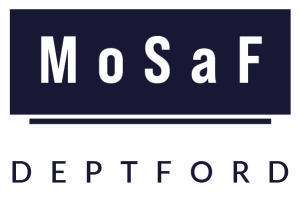“But is not the slave trade entirely a war with the heart of man? And surely that which is begun by breaking down the barriers of virtue involves in its continuance destruction to every principle, and buries all sentiments in ruin.”
These are the words of Olaudah Equiano – published writer, prominent abolitionist, and formerly enslaved African. We’ve learnt how the triangular slave trade began, about its key events, and now, in this third and final post of our mini-series, we’ll explore some of the events and people that fuelled its abolition in 1807.
~~~
Olaudah Equiano was forced into slavery at the age of 11. He was brought to Deptford as an adult and sold to another slaver, remaining with this man for five years more. Equiano eventually bought his freedom, returned to London after 20 years working as an explorer and merchant, and published his memoirs in 1789 under the title The Interesting Narrative of the Life of Olaudah Equiano.
This testament provided a first-hand account of the atrocities enslaved individuals faced. It fiercely condemned the trade, was reprinted several times, and became a hugely influential work of abolitionist literature. Equiano travelled the country, lecturing and gaining support for the movement.
He was not alone. In the 1780s, Equiano established the Sons of Africa, a campaign group fighting hard for abolition, comprised of formerly enslaved African men. They operated in London to educate politicians, the royal family, and the general public on the realities of the triangular slave trade. Amongst its members was the Black 18th-century composer, actor, and writer, Ignatius Sancho. Sancho was able to introduce abolitionist ideas to the influential circles in which he moved.
The campaign to end the slave trade was also fought from within Parliament itself. The MP William Wilberforce took up the cause, and the Society for Effecting the Abolition of the Slave Trade, working closely with the Sons of Africa, supplied him with evidence to present to his peers. Thomas Clarkson was a founding member of this society in 1787. He dedicated his life to ending slavery and, as a prize-winning essayist, lent intellectual weight to the cause. Clarkson’s work within the Society included gathering eyewitness testimonials and collecting physical evidence – like shackles and branding irons – from British slaving ports, such as Deptford, Bristol, and Liverpool.
This campaigning was set against a backdrop of increasing concern over the moral, religious, and humanitarian legitimacy of the slave trade. The Zong Massacre (see our key events blog) threw into sharp focus the brutality of the trade. Its events were publicised by Ottobah Cugoano, a formerly enslaved African and anti-slavery campaigner, and by Olaudah Equiano. Their writings brought the horrors of the Zong Massacre to public attention, gaining sympathy for the cause.
Across the Atlantic, separate yet parallel fights for freedom were taking place. Enslaved communities in the Americas used force as a form of resistance on numerous occasions, as detailed in our previous post. Notably, St Domingue (later Haiti) successfully secured its liberty in 1804, after 13 years of warfare against the French, Spanish, and British forces that were trying to re-establish chattel slavery on the island. Led by financial rather than moral concerns, Members of Parliament back in Britain feared that similar acts of resistance would eventually occur in their own colonies.
Ultimately, amidst committed humanitarian campaigning, shifting moral opinion, and African resistance, the Slave Trade Abolition Act of March 1807 was accepted by Parliament and signed by King George III. It banned the trading of enslaved people within the British Empire. Several of the ships employed to enforce the abolition of the slave trade were built in Deptford’s dockyards, centuries after the first British vessel to embark on the trading route had sailed from Deptford Strand.
~~~
The triangular slave trade may have been successfully abolished, but enslaved men, women, and children continued to be forced into hard labour in plantations across the Americas for decades. The legacy of the slave trade, including the racial discrimination it perpetuated, is still felt globally to this day.
Education is the first step to unpicking and addressing this legacy. So here at MoSaF, we invite you to join us in our campaign to establish a Museum of Slavery and Freedom in Deptford and work towards a future free of prejudice for all citizens of this country, whatever their heritage or skin colour.
As ever, if you’re interested in learning more about our campaign to build a Museum of Slavery and Freedom in Deptford, keep an eye on our ‘What’s On’ tab – and sign up to our quarterly emails here.
